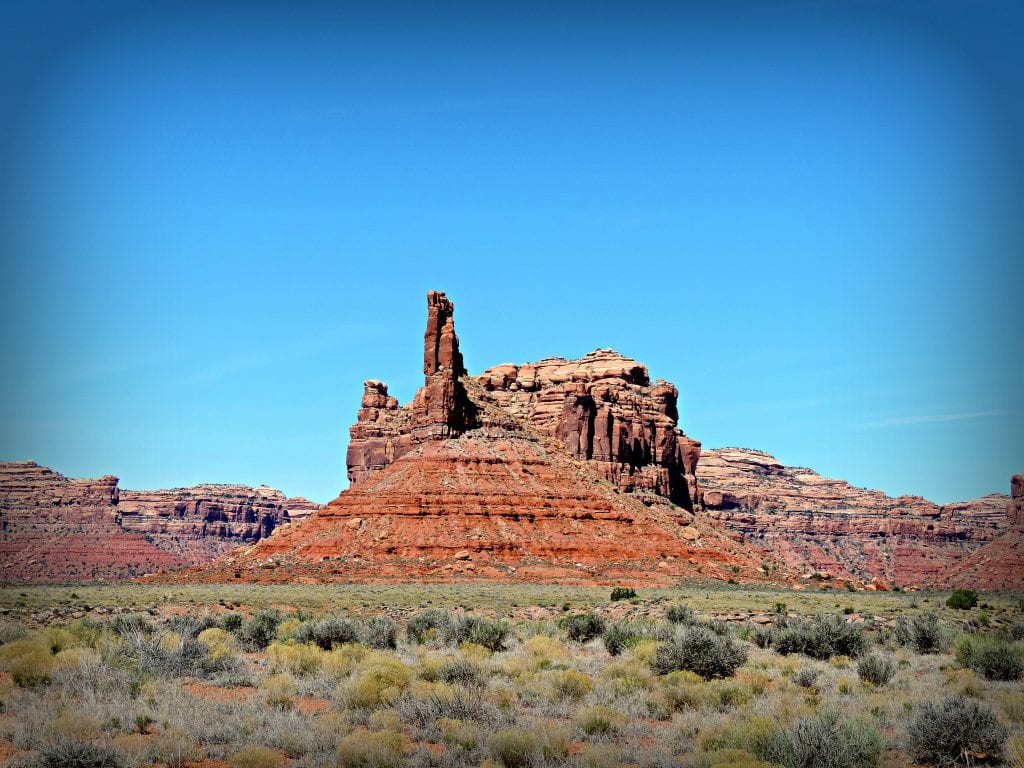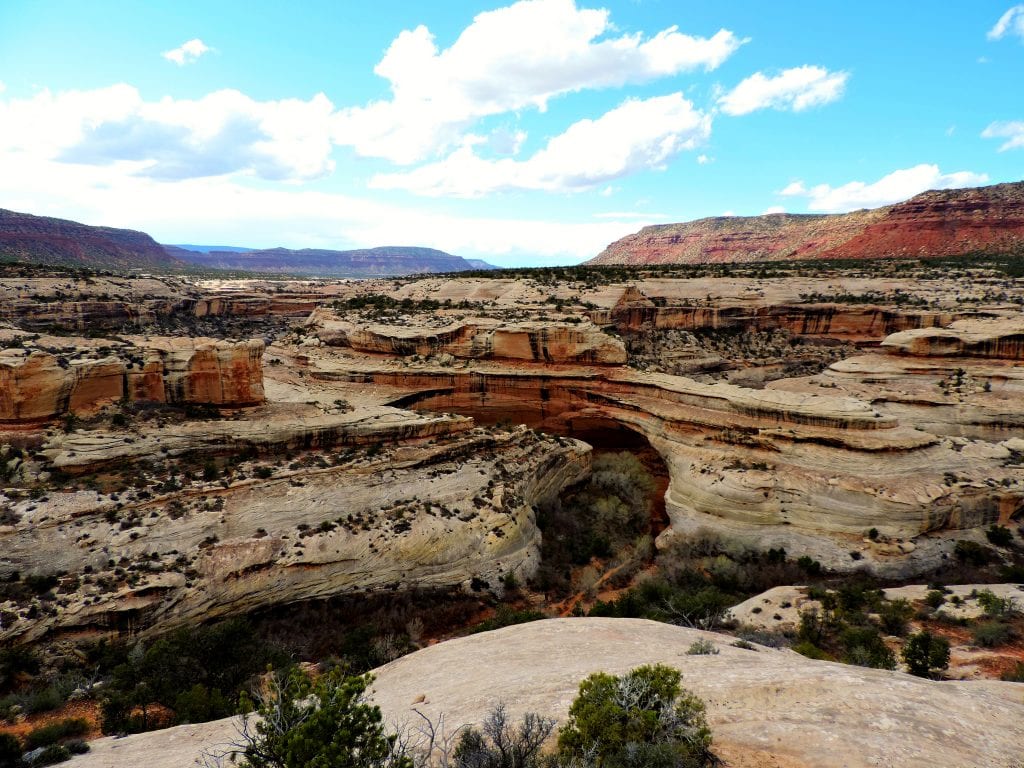
In case you missed it, on April 26, President Trump issued an executive order requiring Secretary of the Interior, Ryan Zinke, to review whether to diminish or dismantle National Monuments that were protected under the 1906 Antiquities Act. The order–which demands Zinke review all National Monuments designated since 1996 that are over 100,000 acres in size–affects 24 of some America’s most iconic National Monument spanning more than 2.5 million acres.
If you haven’t already weighed into tell Zinke to keep his hands off our National Monuments, do so today. Send a letter here >>
Trump’s attack on National Monuments is unprecedented and a major threat to the legacy of the Antiquities Act.
The Antiquities Act gives Presidents the authority to protect “historic landmarks, historic and prehistoric structures, and other objects of historic or scientific interest.” The law was passed during the Theodore Roosevelt administration, and Roosevelt quickly set about designating a wide range of lands and resources as National Monuments, including the Grand Canyon National Monument. It’s been used by every President since to protect other renowned landscapes, including Chaco Culture National Historical Park, Arches National Park, and Olympic National Park.
While Presidents can make National Monuments from land controlled by the federal government, they generally can’t change how that land is used. If the land already is in use for livestock grazing, mining, or for oil and gas extraction, then those valid leases can still continue. However, if the land remains untouched by commercial activity, it will stay that way.
President Trump, eager to line the pockets of oil, gas, and coal industry executives, called Obama-era National Monuments “a massive federal land grab” and an “abuse of power.” These statements, like much of his rhetoric, are completely baseless. Trump and his ilk have argued that certain National Monuments are larger than necessary and that Presidents should defer to the state about whether to use the Antiquities Act, in order to free up that land for commercial activity.
Never mind that lands protected in National Monuments belong to all Americans–not to the states.
Following Secretary Zinke’s review, the Trump administration may try either to rescind Monument designations or modify them, either by reducing the size of the Monument or authorizing more extractive activities within their boundaries.
Everything about this unprecedented attack on National Monuments suggests that we will lose some or all of the National Monuments that we, as Americans, own, cherish, and love. Worse, it seems planned to fuel a broader push to take public lands away from Americans. As WildEarth Guardians’ Jeremy Nichols wrote recently, “this is an assault on American public lands, plain and simple. And that assault seems to be fueled by the demands of the oil and gas industry.”
Below is a list of National Monuments likely affected by Trump’s Order:
American Samoa: Rose Atoll
Arizona: Grand Canyon-Parashant, Ironwood Forest, Vermillion Cliffs, Sonoran Desert
California: Giant Sequoia, Carrizo Plain, San Gabriel Mountains, Berryessa Snow Mountain, Mojave Trails, Sand to Snow
Colorado: Canyons of the Ancients
Hawaii: Papahanaumokuakea, WWII Valor in the Pacific, Pacific Remote Islands
Massachusetts: Northeast Canyons and Seamounts
Montana: Upper Missouri River Breaks
New Mexico: Rio Grande del Norte, Organ Mountains-Desert Peaks
Nevada: Basin and Range, Gold Butte
Northern Mariana Islands and Guam: Marianas Trench
Oregon/California: Cascade-Siskiyou
Utah: Grand Staircase-Escalante, Bears Ears
Washington: Hanford Reach
On the chopping block first is Bears Ears National Monument, a 1.35 million acre area sacred area to Native American tribes. Bears Ears boasts “[a]bundant rock art, ancient cliff dwellings, ceremonial sites, and countless other artifacts” and land that is “profoundly sacred to many Native American tribes, including the Ute Mountain Ute Tribe, Navajo Nation, Ute Indian Tribe of the Uintah-Ouray, Hopi Nation, and Zuni Tribe.”
Trump says he wants to diminish the boundary of Bears Ears. Worse, he wants to accommodate demands by the fossil fuel industry and the state politicians they support to open up the area to a free-for-all of industrial exploitation. As Trump said, “we’re going to free it up, which is what should have happened in the first place. . . . And tremendously positive things are going to happen on that incredible land, the likes of which there is nothing more beautiful anywhere in the world.”
The only reason to “free up” the Bears Ears is to open the floodgates for fossil fuel development. For industry and their cronies in the Trump Administration, this may be a positive thing. For Americans, this is beyond insult and injury.

Thankfully, President Trump is going to lose any attempt to destroy, demolish, diminish, or dilute any National Monument. To the extent the President has authority to designate National Monuments, the Antiquities Act never gave the President authority to undo designations. And, under federal law, it’s Congress, not the executive branch, that decides how to manage public lands. That’s Constitutional, set forth under the Property Clause in Article IV.
The Antiquities Act is pretty clear, Congress never gave the President authority to undo National Monuments. As it states:
(a) Presidential Declaration.-The President may, in the President’s discretion, declare by public proclamation historic landmarks, historic and prehistoric structures, and other objects of historic or scientific interest that are situated on land owned or controlled by the Federal Government to be national monuments.
(b) Reservation of Land.-The President may reserve parcels of land as a part of the national monuments. The limits of the parcels shall be confined to the smallest area compatible with the proper care and management of the objects to be protected.
When Congress passed the Antiquities Act, it delegated some authority to the President to protect public lands and sites. But they didn’t delegate authority for the President to change them once designated.
This is not a novel theory or a new understanding of federal law. When Congress created the 1976 Federal Land Policy and Management Act, for example, the House Committee overseeing the bill stated that it intended to prohibit the president from modifying or abolishing national monuments, stating that the law would “specifically reserve to the Congress the authority to modify and revoke withdrawals for national monuments created under the Antiquities Act.” In this case, Congress has spoken.
We’ll surely be seeing President Trump in court if he lays a finger on our National Monuments. And, thankfully, we’re certain win.
In the meantime, we’re stepping up to ensure this attack on National Monuments backfires politically on President Trump and his fossil fuel allies. America loves it lands, it loves its iconic places, and it loves its heritage.
Ultimately, this unprecedented attack will only empower a new generation to step up, speak out, and do everything possible to defend our National Monuments and public lands. Join us today!
